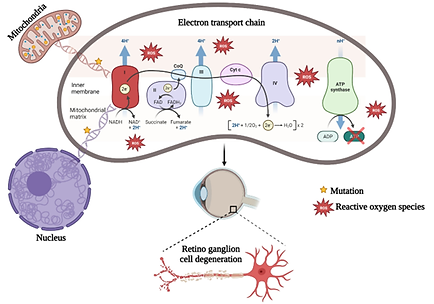
_edited.png)
Prakash chermakani, PhD
Post doctoral fellow
Scopus Author ID: 56703219500
I am a molecular biologist with expertise in genetic engineering, next-generation sequencing, and CRISPR-based genome editing. Currently, working as a post doctoral fellow at the Venkatesh Lab, CCMB focusing on primary neuron culture in mice and differentiating iPSC into NPC and motor neuron progenitors for spinal cord injury research. I pursued my Ph.D. at Aravind Medical Research Foundation under the supervision of DR. P. Sundaresan to understand the crosstalk between nuclear and mitochondrial genomes in Leber’s Hereditary Optic Neuropathy. Before transitioning to academia, I gained industrial experience at Rasi Seeds R&D Biotech. I am deeply passionate about leveraging molecular biology and stem cell technology to develop personalized and regenerative medicine, with a strong commitment to advancing innovative therapeutic solutions.
Research Interests

Leber’s Hereditary Optic Neuropathy (LHON) is a neurodegenerative mitochondrial disorder that causes irreversible blindness, primarily affecting retinal ganglion cells (RGCs)—the neurons responsible for transmitting visual information from the eye to the brain. LHON is typically associated with mitochondrial DNA (mtDNA) point mutations in Complex I genes of the electron transport chain, leading to oxidative phosphorylation (OXPHOS) deficiency and resulting in painless vision loss.
My research focuses on investigating atypical LHON cases, particularly proband diagnoses lacking mtDNA point mutations, suggesting a possible autosomal recessive inheritance pattern. By leveraging next-generation sequencing (NGS) and CRISPR-based genome editing, I aim to identify novel genetic contributors to LHON pathogenesis. Additionally, I also focused on the molecular Genetics of various other monogenic ocular disorders including Traboulsi syndrome, Stargardt, Juvenile X linked Retinoschisis, Primary open angle glaucoma, Leber's congenital amaurosis, Macular corneal dystrophies
Optic Neuropathy
Spinal cord injury (SCI) profoundly disrupts neural circuits in the central nervous system and cause paralysis. It requires multiple treatment modalities to improve axon regeneration. One of the promising approach is to implant the CNS-specific neural stem cells at the injured site can help to reconstruct the damaged area and improve the axon memory to enhance recovery. Neural progenitor cells (NPC’s) replenish the lesion site and create a conducive regenerative niche by secreting neuroprotective and neuro-regenerative factors to support the healing process at the injury site.
_edited_edited.jpg)
Spinal cord injury
Publications
Chermakani, P., Gowri, P., Mahesh Kumar, S., & Sundaresan, P. (2023). Exploring mito-nuclear genetic factors in Leber's hereditary optic neuropathy: insights from comprehensive profiling of unique cases. EXCLI journal, 22, 1077–1091. https://doi.org/10.17179/excli2023-6297
Raj, R. K., Dhoble, P., Anjanamurthy, R., Chermakani, P., Kumaran, M., Devarajan, B., & Sundaresan, P. (2020). Genetic characterization of Stargardt clinical phenotype in South Indian patients using sanger and targeted sequencing. Eye and vision (London, England), 7, 3. https://doi.org/10.1186/s40662-019-0168-8
Chandran, P., Chermakani, P., Venkataraman, P., Thilagar, S. P., Raman, G. V., & Sundaresan, P. (2019). A novel 5 bp homozygous deletion mutation in ASPH gene associates with Traboulsi syndrome. Ophthalmic genetics, 40(2), 185–187. https://doi.org/10.1080/13816810.2019.1605390
